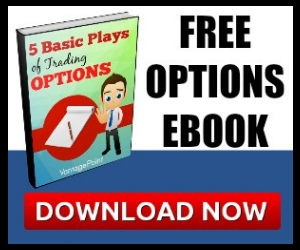One of the most basic of human instincts is to avoid pain and to seek comfort. This makes sense. No one wants to experience pain; we prefer pleasure and comfort. In trading, however, pursuing what’s comfortable is frequently not a good idea.
Trading for Comfort
There are many examples of trading decisions that are made for comfort but turn out to be the incorrect play. For example, a trader experiences three losses in a row and another trade sets up with criteria similar to the last losing trade. Many traders will avoid taking the trade, choosing comfort over the potential pain of another loss. The right thing to do, of course, is to take the trade if it meets your criteria. The last trade has no influence on the current trade, though the discomfort we feel about another loss often causes an incorrect decision.
Do You Choose Certainty or Risk?
Psychologists understand that the pain-comfort dynamic has great influence when it comes to trading losses and profits. Take this classic experiment and see how this dynamic affects decision-making:
You have a choice. You can choose either:
- A sure gain of $3,000, or
- An 80% chance of a $4,000 gain and a 20% chance of gaining nothing.
Which do you choose?
Once you have made your choice, you can turn to the next part of the experiment:
You have another choice to make. This time, you can choose either:
- A sure loss of $3,000, or
- An 80% chance of losing $4,000 and a 20% chance of losing nothing.
Again, which do you choose?
The vast majority of people choose incorrectly in both instances. In the first question, most people prefer the certain gain of $3,000, even though the expectancy of choice B has a higher value (0.8 * 4,000 = $3,200). Betting on the sure thing is a more comfortable decision, though incorrect.
Likewise, when the question is framed as a loss, most people choose the riskier gamble of an 80 percent chance to lose $4,000 and a 20 percent chance of losing nothing, which, if assessed as an expected value, results in a greater loss ($3,200) than the sure loss option. Again, it feels better to try and avoid the pain of loss even though there is only a small chance this will happen. We are willing to embrace higher risk to avoid pain.
How This Works in Trading
We can see how this plays out in trading. The sure gains are favored as a comfortable choice and form the basis of closing winning trades prematurely. It feels good to take profits, naturally, but the bane of many traders is to close trades too early, limiting profits and missing the larger gains available when a sound trade is working.
The flip side is also seen. Many traders won’t take a loss. Instead, they make a riskier choice. Often, they hope the market will return back to their entry for a chance to close the trade at break even. These decisions give avoid pain (at least temporarily), but they usually are not the best ones, especially over the long haul. When traders cut profitable trades short for the comfort of locking-in the sure gain and let losers run to avoid the pain of taking a loss, the small gains will eventually be wiped out by larger losses.
What Traders Can Do
Traders can take a number of steps to counteract this basic human nature:
- Become aware of how you think. Start to recognize when you are making decisions to seek comfort over perceived pain.
- Be willing to be uncomfortable. Although not easy to do, it’s also not impossible. Know that making the correct trading decision often involves discomfort.
- Commit to the high value trading action. The high value action is letting the winning trade run, using stops and taking losses when wrong, and taking solid trade setups as they occur.
Successful trading sometimes requires us to act contrary to human nature. Because of this, the psychological aspects of trading can be difficult to learn. The author has many articles on the nuances of trading psychology at his website, including a free, seven-part guide to key mental trading skills needed by every trader. You can access it by clicking here.




